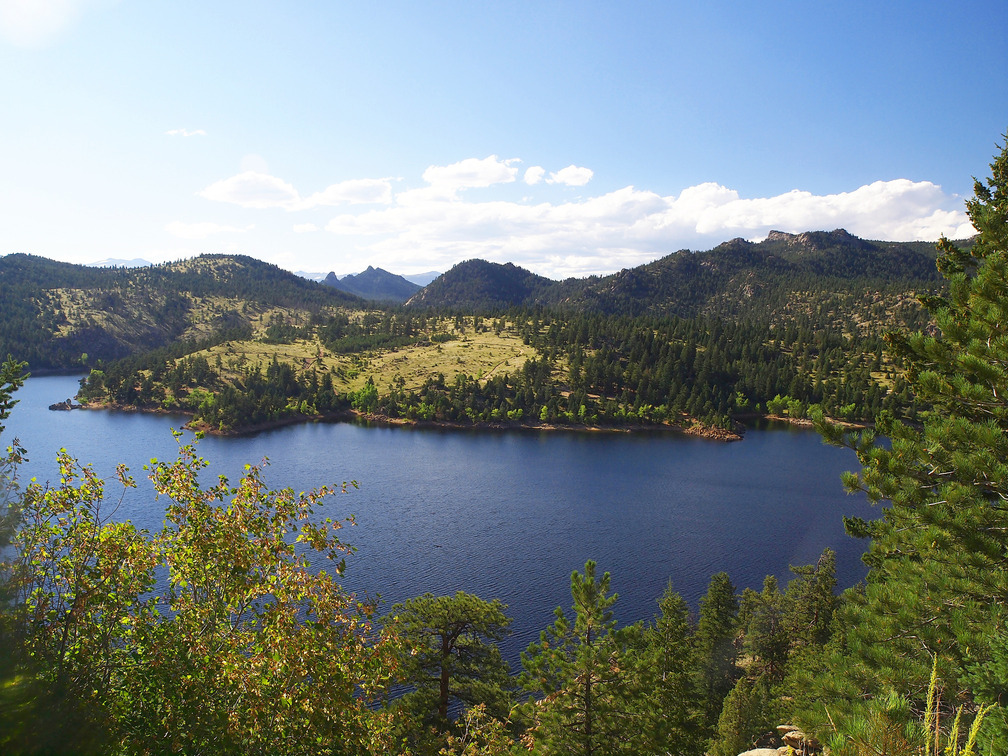The Local newsletter is your free, daily guide to life in Colorado. For locals, by locals.
Considering the Denver region is growing by an average of 4,500 new residents per month, a large sector of the population likely doesn’t remember the catastrophic 2002 drought. The most severe water shortage since the Dust Bowl, snowpack and soil moisture were at all-time lows, and we remained in a dry period until 2006. Luckily, with water restrictions in place, we never actually ran out of water—we just got really close.
“We realized that we had an immediate need to correct a vulnerability in our system,” Denver Water CEO Jim Lochhead says. That’s when Denver Water started planning the Gross Reservoir Expansion Project, and after more than a decade of negotiations, the project (which was recently endorsed by Gov. John Hickenlooper) is underway.

But will it be enough? The short answer is yes—as long as Denverites work on strengthening their water conservation practices. Lochhead was pleased to note that when a storm comes through the Mile High City, there is a noticeable drop in outdoor water use, because well-informed residents are turning off their sprinkler systems. Denver residents have managed to reduce water consumption by more than 20 percent in the last 15 years, even with a 15 percent increase in population, according to Lochhead.
The decrease is not enough to mitigate the risk of drought, however. As Colorado’s largest water utility, the Denver Water system is made up of two collection systems—the Northern and the South Platte—and they are incredibly imbalanced. About 80 percent of the water comes from the south system, leaving the north very vulnerable to low rainfall or wildfires. During the notable dry years of 2002 and 2013, clients in the north end were lucky their taps continued to flow.
“We were literally only one drought away from a major problem in our system,” Lochhead says, noting that as recently as 2013, the system was virtually out of water in the north-end.
Located in Boulder County, the Gross Reservoir currently holds 41,811 acre-feet of water, which is more than 13 billion gallons, but it’s just not enough. The expansion—which plans to break ground in 2019 and wrap up in 2025—is estimated to cost about $380 million and triple its capacity. While the project has received some pushback from Boulder residents regarding the pains of construction, Lochhead is confident they can work with the area’s neighbors and maintain an open line of communication by meeting with individuals, organizations, and hosting regular public meetings. They will also open a public information office with regular business hours to address any concerns, closer to construction, says Lochhead.
Denver Water’s collection area stretches 2.5 million acres across more than eight counties. The Colorado River Cooperative Agreement outlines the negotiations between West Slope water providers, several ski areas, and relevant government bodies necessary to move the expansion project forward. It’s quite comprehensive, and Lochhead argues that the environment is better off with this project than without it, because of benefits like Denver Water being able to augment stream flows of the Fraser River in Grand County after its completion.
Although there are extensive drought contingency plans in place, Lochhead timidly approaches every year hoping for rain, so they don’t have to impose stricter water restrictions on their customers. In Colorado, though, there’s just no way to predict precipitation, so the Gross Reservoir expansion will help ease drought concerns—at least for now.
Want to take action? Take a look at Denver Water’s conservation tips and rebate incentive options.








